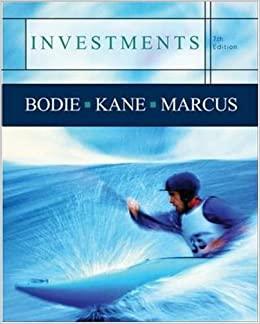Answered step by step
Verified Expert Solution
Question
1 Approved Answer
What happens to your RESP plan if your child does not pursue a post-secondary education? You must repay all grant monies to the government. You

 What happens to your RESP plan if your child does not pursue a post-secondary education? You must repay all grant monies to the government. You may be subject to a 20% tax penalty. You may be over the transfer the growth into your RRSP, if you have RRSP contribution room. All of the above Question 17 (1 point) ] What would be better, to invest the maximum RESP lifetime contribution per child once the child is born and collecting one grant payment over 18 years, or to invest $4,000 per year for the next 18 years and collecting $400 CESG per year. Both options would be invested with a growth rate of 8%. Investing the maximum RESP lifetime contribution. Investing $4,000 per year for next 18 years. It depends on which school the child will attend. It does not matter which one. Which of the following is not true about the Lifelong Learning Plan (LLP)? Allows RRSP holders to withdraw a maximum of $10,000 a year to a maximum of $20,000 to finance their part-time education The withdrawals are interest-free loans to the tax payer. People can participate in this plan up to the age of 71. The program must last at least three months and require at least 10 hours a week of class or work time
What happens to your RESP plan if your child does not pursue a post-secondary education? You must repay all grant monies to the government. You may be subject to a 20% tax penalty. You may be over the transfer the growth into your RRSP, if you have RRSP contribution room. All of the above Question 17 (1 point) ] What would be better, to invest the maximum RESP lifetime contribution per child once the child is born and collecting one grant payment over 18 years, or to invest $4,000 per year for the next 18 years and collecting $400 CESG per year. Both options would be invested with a growth rate of 8%. Investing the maximum RESP lifetime contribution. Investing $4,000 per year for next 18 years. It depends on which school the child will attend. It does not matter which one. Which of the following is not true about the Lifelong Learning Plan (LLP)? Allows RRSP holders to withdraw a maximum of $10,000 a year to a maximum of $20,000 to finance their part-time education The withdrawals are interest-free loans to the tax payer. People can participate in this plan up to the age of 71. The program must last at least three months and require at least 10 hours a week of class or work time Step by Step Solution
There are 3 Steps involved in it
Step: 1

Get Instant Access to Expert-Tailored Solutions
See step-by-step solutions with expert insights and AI powered tools for academic success
Step: 2

Step: 3

Ace Your Homework with AI
Get the answers you need in no time with our AI-driven, step-by-step assistance
Get Started


